In Sou Fujimoto’s far-flung Not A Hotel villa, solitude feels almost planetary
An underwater sauna, an infinity pool and a circular courtyard garden are just a few of the highlights at Not A Hotel’s latest outpost, on Japan’s Ishigaki Island

It’s not often that an architect seems happy for a completed structure to disappear. Yet for Sou Fujimoto, the idea of creating the lightest possible human imprint on the rich nature that surrounds it reflects the essence of his latest project.
Located on the subtropical shores of Ishigaki Island, in Japan’s southernmost Okinawa region, Not A Hotel Earth is a private villa designed in the form of a tilted, plant-wrapped circle, overlooking the East China Sea. White, light and purist, with a hint of futurism, the seemingly wall-less structure hovers weightlessly in its setting. Infinity pools and glass walls create near-invisible boundaries between inside and out, while at its curved heart lies a wild meadow.
This is the latest addition to the rapidly growing Not A Hotel portfolio, an innovative Japanese company specialising in architect-designed spaces with fractional ownership. Properties are managed by Not A Hotel, with owners able to rent out their share when not in use, giving guests the chance to enjoy the rare experience of a hotel-like immersion in remarkable residential-style surroundings. More than 30 buildings now span six sites across Japan, from Tokyo and Nasu to Kitakaruizawa and Fukuoka, with four more in development – all brought to life by a star-studded roster of architects, including Suppose Design Office, Snøhetta and Nigo (who, alongside Pharrell Williams, is also a creative adviser to the company).
Hidden depths: Not A Hotel Earth
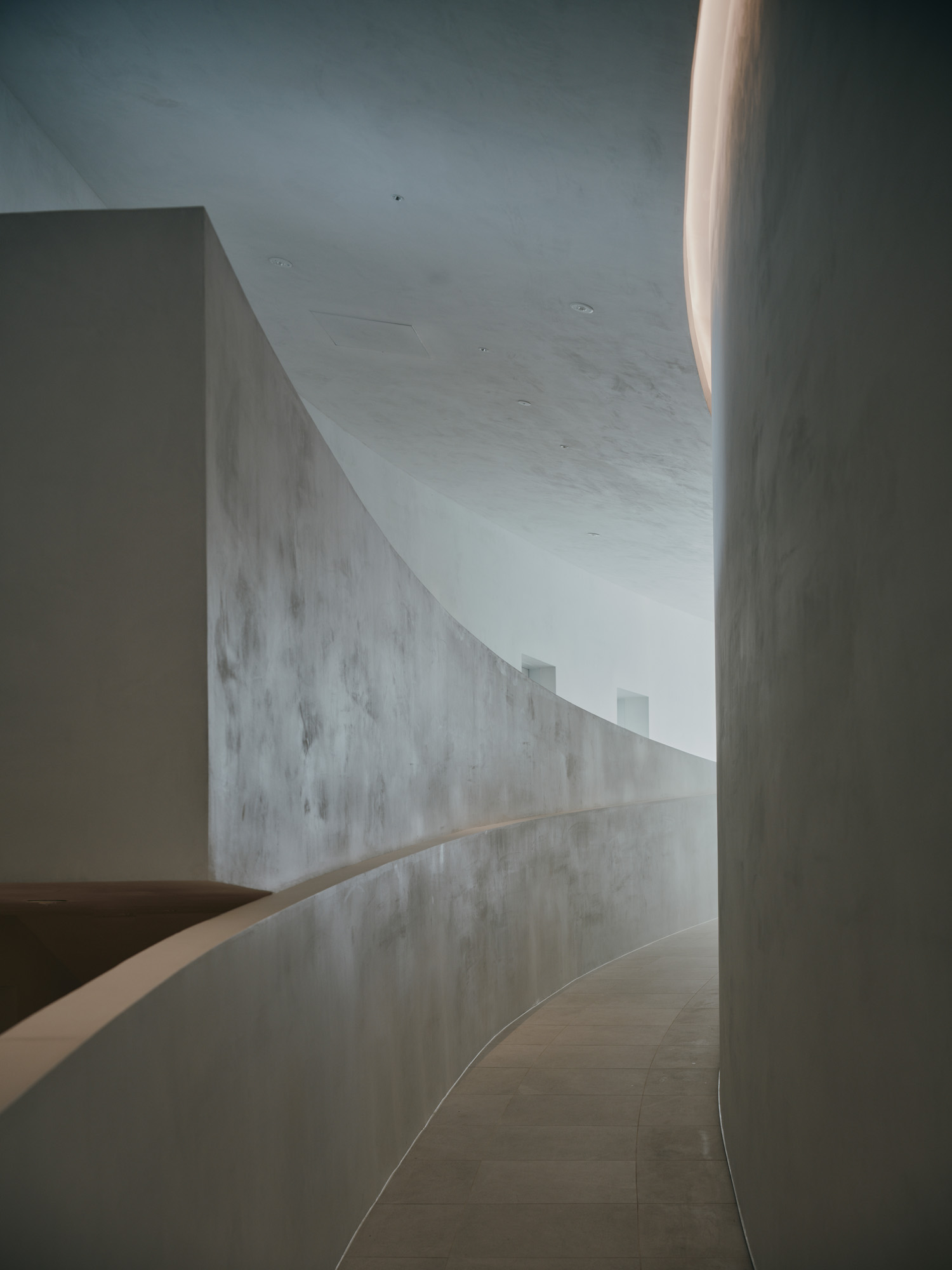
A curved white corridor leads down to the main living space
Not A Hotel Earth, a four-bedroom space sleeping up to ten people, is the new flagship of the Tokyo-based company, which is headed up by new-generation entrepreneur Shinji Hamauzu. ‘The Not A Hotel locations we choose are often not famous tourist spots, but we feel that they have potential,’ says Hamauzu. ‘We always trust the architects completely and don’t give them a brief. We just tell them how many rooms we would like, then let them create as freely as possible.’ Describing the allure of Fujimoto’s work, he adds, ‘Often when people see his buildings for the first time, they may think they’re a bit unusual. But with time, people can feel how his designs harmonise with the land and with nature.’
Arriving at Not A Hotel Earth, there is an immediate sense of being cocooned. A gently sloping walkway to the front door transitions visitors from the outer world to the inner sanctum – and after crossing the threshold and slipping off shoes, the journey continues along a curved white corridor, which flows into an airy living room.

Centre stage beneath high ceilings is a bespoke mahogany Cassina table, its softly curved lines mirroring the building’s form. Wrapped around it are a set of Carl Hansen chairs, while alongside is a sunken seating area. A minimalist unit by kitchen appliance brand Hoshizaki is home to a signature Not A Hotel ‘conbini’ (the name given to Japan’s ubiquitous convenience stores) packed with local treats, from mango juice and whisky to Cup Noodles. Nature, however, quickly steals the show. Along one side, the space opens out onto a 20m infinity pool, dissolving into an expanse of sea and sky; and on the inner side, glass walls flow into a circular courtyard garden.
The house’s green inner sanctum is by acclaimed landscape architect Taichi Saito, whose design company, Solso, creates green environments for a wide range of residential, commercial and urban ventures. This tilted, organic cosmos of vivid green vegetation, with an edge of untamed beauty, features leafy banyan trees, scattered cut-out circles (one containing a children’s pool, the other a sunken firepit), and lush planting flowing seamlessly all the way up to the roof, where views of sea and sky once again loom large.
Receive our daily digest of inspiration, escapism and design stories from around the world direct to your inbox.

There are several ocean-facing guest rooms, which also look out over the 20m infinity pool that wraps around the outside of the house
‘We trust the architects completely and don’t give them a brief. We tell them how many rooms we would like, then let them create as freely as possible’
For Fujimoto, the idea of creating a light circular structure arose soon after visiting the site – a spacious expanse of land, on which stood a private villa, surrounded by gardens. While the initial plan had been for several villas, the architect was struck by how well-maintained the original house was, and the project soon refocused on the idea of building a single property. From the start, Fujimoto was keen not to create a conventional rectilinear structure facing the sea. Instead, he maximised the depth of the land plot by making a circular structure. Its round shape also softly echoes gusuku, the ancient curved stone fortresses particular to Okinawa.
‘It’s not just about having an ocean view, but also a view to the sky,’ says Fujimoto. ‘We tested many ideas and eventually came up with a kind of huge open courtyard. Once you are in the courtyard, protected by its wall, you can only see the sky. You are surrounded by nature. It’s calm, but you can also feel a dynamic topography. It’s like being in the middle of a valley. That’s a wonderful feeling. You’re both open and protected.’
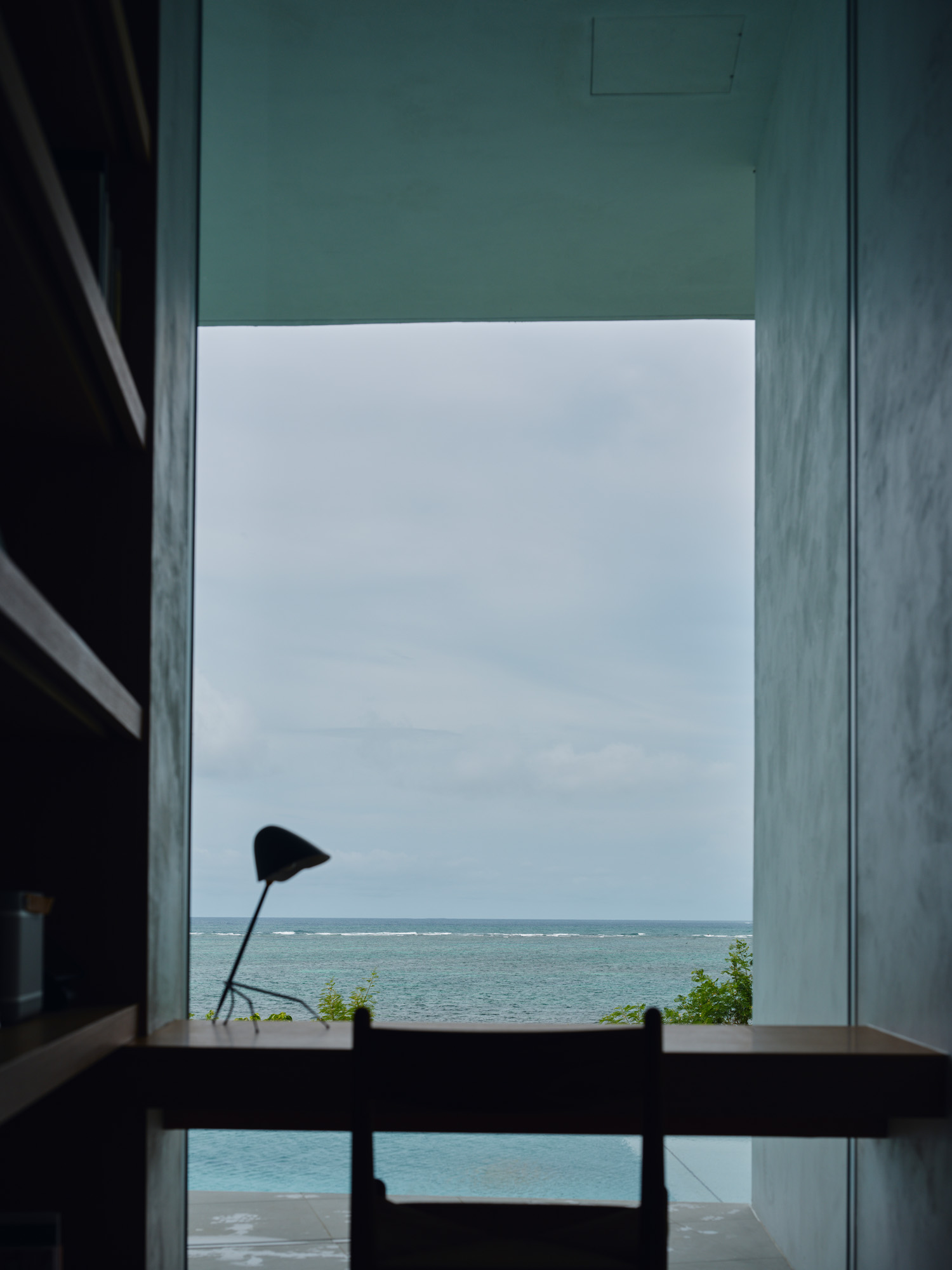
Back inside, several ocean-facing guest rooms flow off the main space, each white and minimalist, with light woods and high ceilings – one also features a library annexe with a desk placed distractingly in front of a floor-to-ceiling glass pane. The lower level is home to more guest rooms, a gym and an underwater sauna, illuminated by a skylight that captures light-reflecting ripples of water.
As with many Fujimoto creations, the idea of harmonising the structure with its natural setting ultimately shaped its creation. ‘The project name is Earth,’ says the architect. ‘If you look from above, it almost disappears into the ground. The circle itself also looks like a small Earth. It can make you feel like you’re the only human on Earth.’
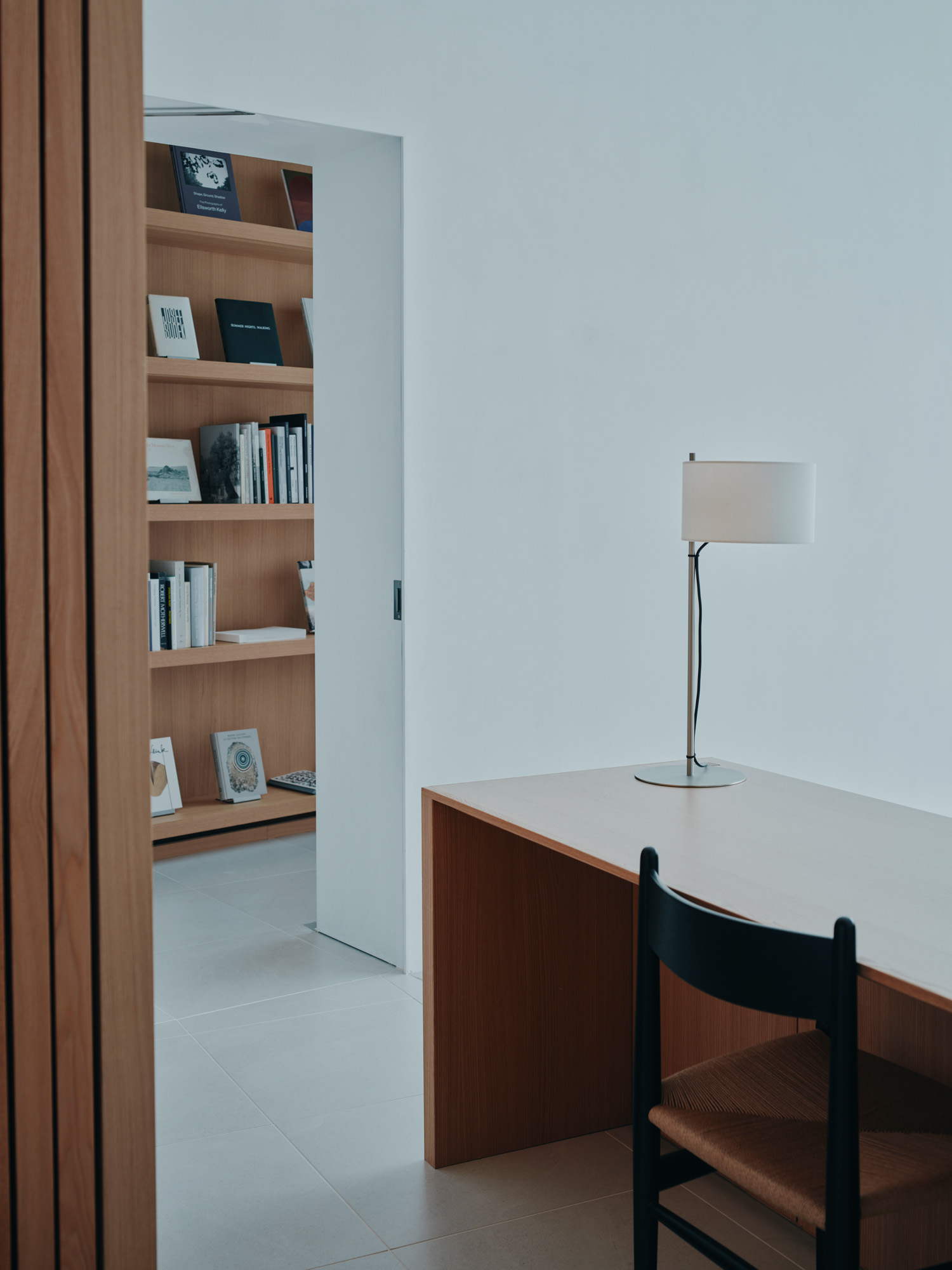
The above guest room features a library annexe
Not A Hotel Ishigaki Earth is located at 120-92 Miyara, Ishigaki, Okinawa 907-0243, Japan.
This article appears in the December 2025 Entertaining Issue of Wallpaper* , available in print on newsstands, on the Wallpaper* app on Apple iOS, and to subscribers of Apple News + from 6 November. Subscribe to Wallpaper* today
Danielle Demetriou is a British writer and editor who moved from London to Japan in 2007. She writes about design, architecture and culture (for newspapers, magazines and books) and lives in an old machiya townhouse in Kyoto.
Instagram - @danielleinjapan
-
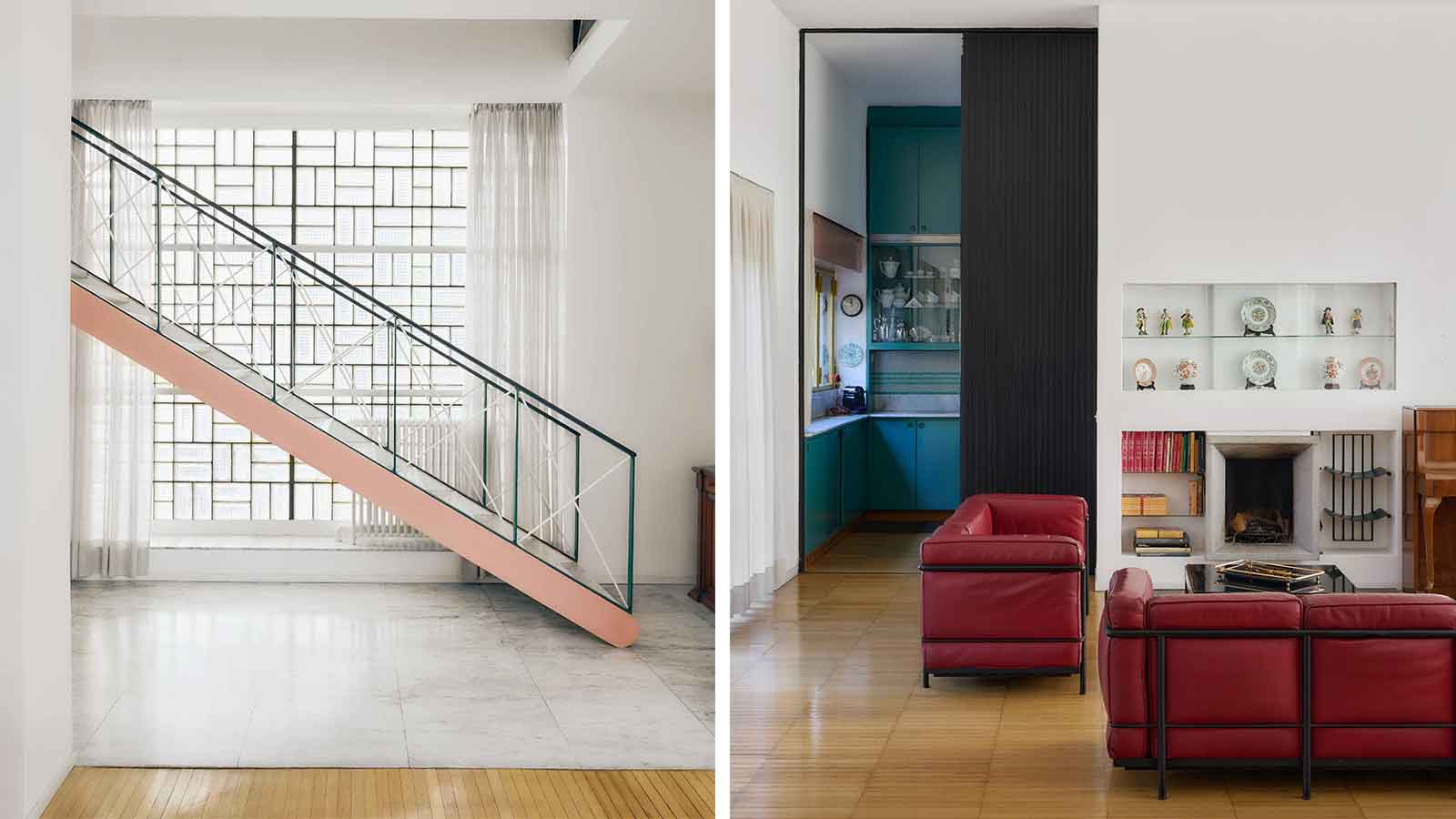 Alcova 2026 locations include a Rationalist gem and an abandoned church
Alcova 2026 locations include a Rationalist gem and an abandoned churchAlcova returns for an 11th edition in 2026 (20-26 April), once again opening up two exclusive Milanese locations, the Baggio Military Hospital and Franco Albini's Villa Pestarini
-
 McLaren Special Operations deals itself a winner with the Las Vegas-inspired Project Viva
McLaren Special Operations deals itself a winner with the Las Vegas-inspired Project VivaWe delve into the world of McLaren Special Operations, discover what the deal is with Project Viva, spec our own hypercar and explore the role of the Pure McLaren experience
-
 Loro Piana’s reopened London flagship is a tactile ‘home from home’
Loro Piana’s reopened London flagship is a tactile ‘home from home’Favouring tactility and warmth, the reopening of the New Bond Street store coincides with an installation at the nearby Royal Academy of the Arts, which traces a line from Loro Piana’s founding in 1924 to the present day
-
 Check into a new pocket-sized Tokyo hotel
Check into a new pocket-sized Tokyo hotelSoil Nihonbashi Hotel brings greenery, warmth and a neighbourhood spirit to a quiet corner near Tokyo Central Station
-
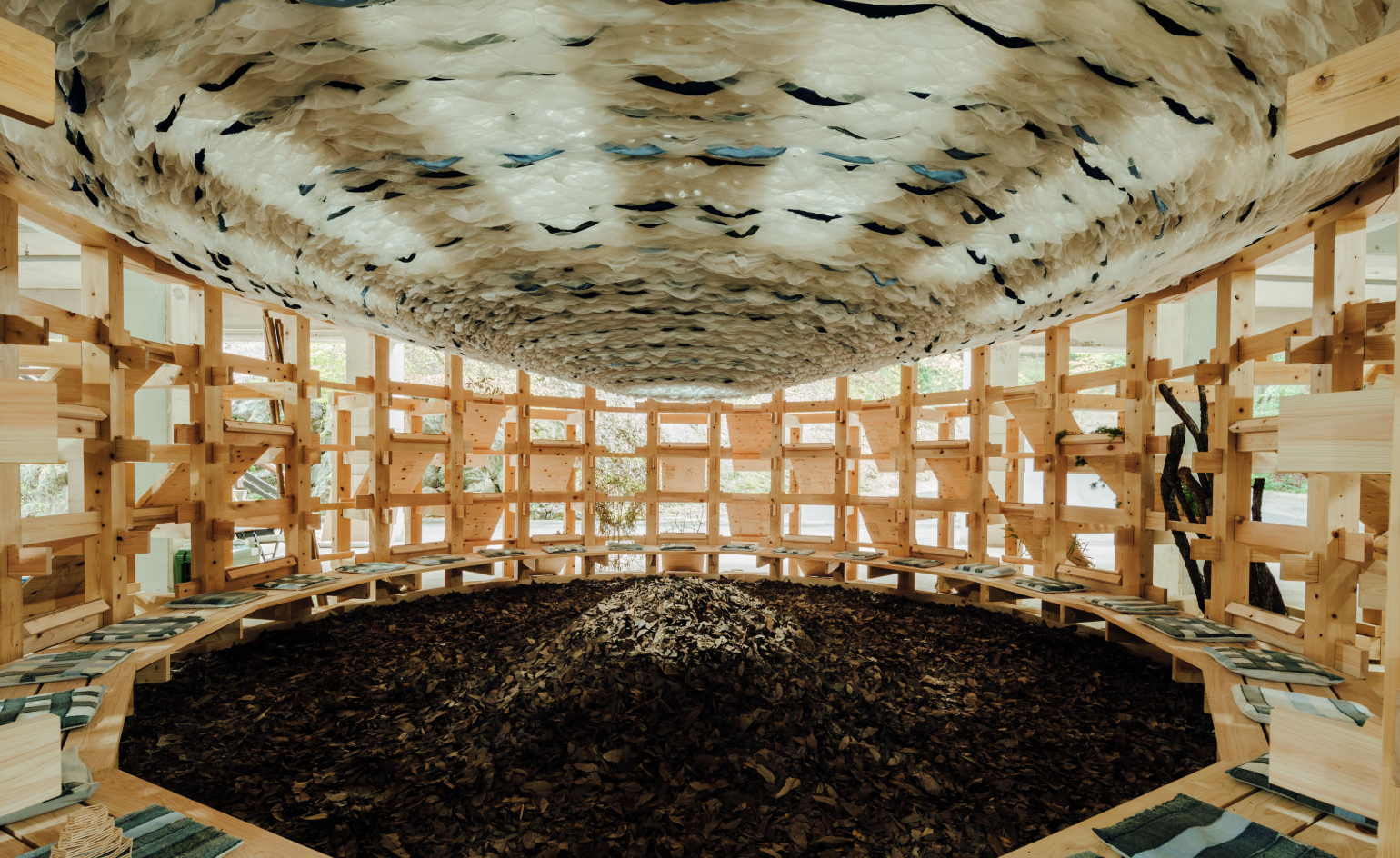 Explore Hiroshima through the eyes of those who rebuilt it
Explore Hiroshima through the eyes of those who rebuilt itJapan’s architectural phoenix continues to rise. ‘The Hiroshima Architecture Exhibition 2025’ explores a legacy of memory and modernism across 23 architects and artist groups
-
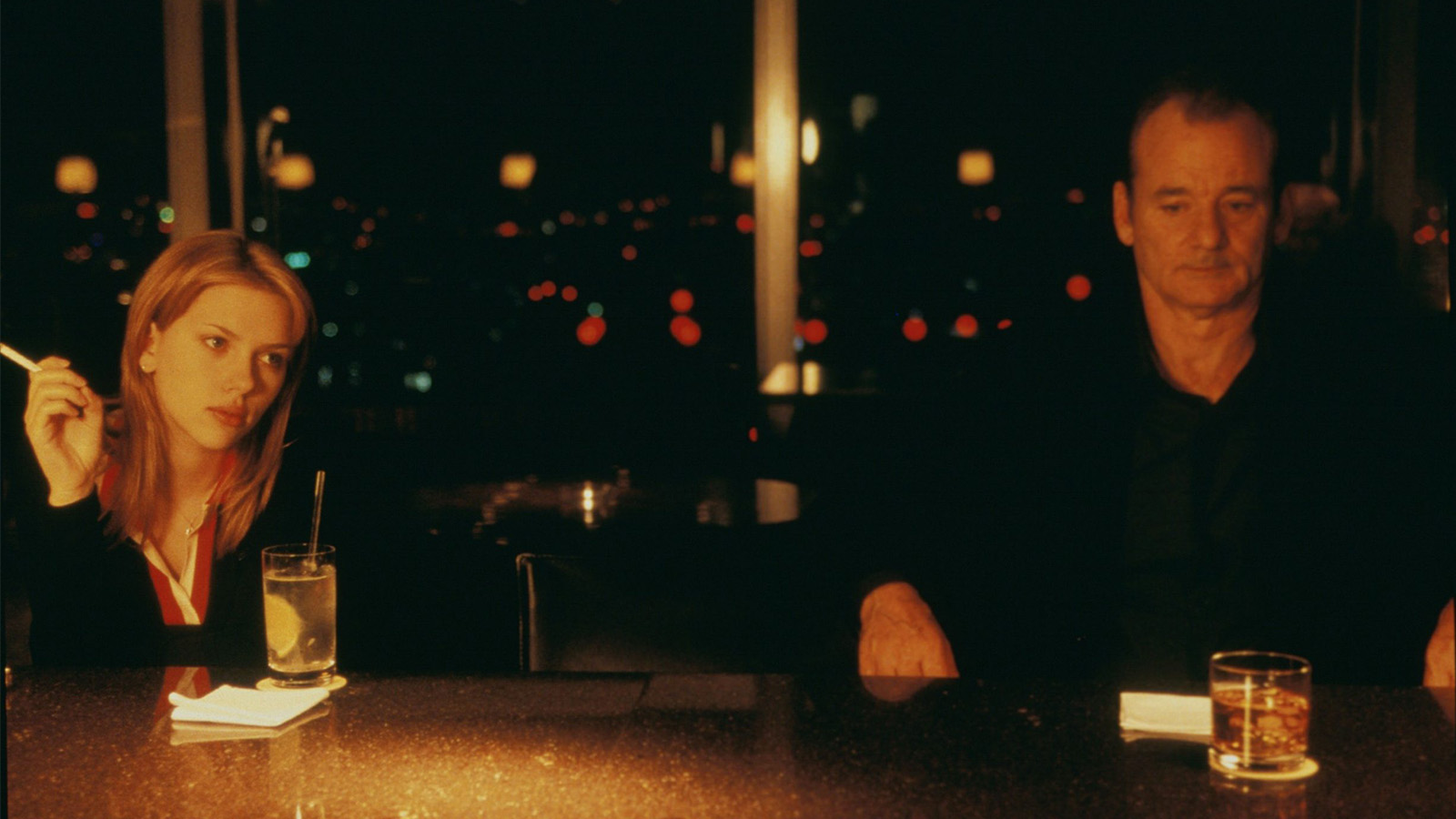 Will the revamped Park Hyatt Tokyo keep its cinematic soul?
Will the revamped Park Hyatt Tokyo keep its cinematic soul?As Park Hyatt Tokyo prepares to reopen after an extensive transformation, film fans wonder: will it still evoke Sofia Coppola’s dreamscape?
-
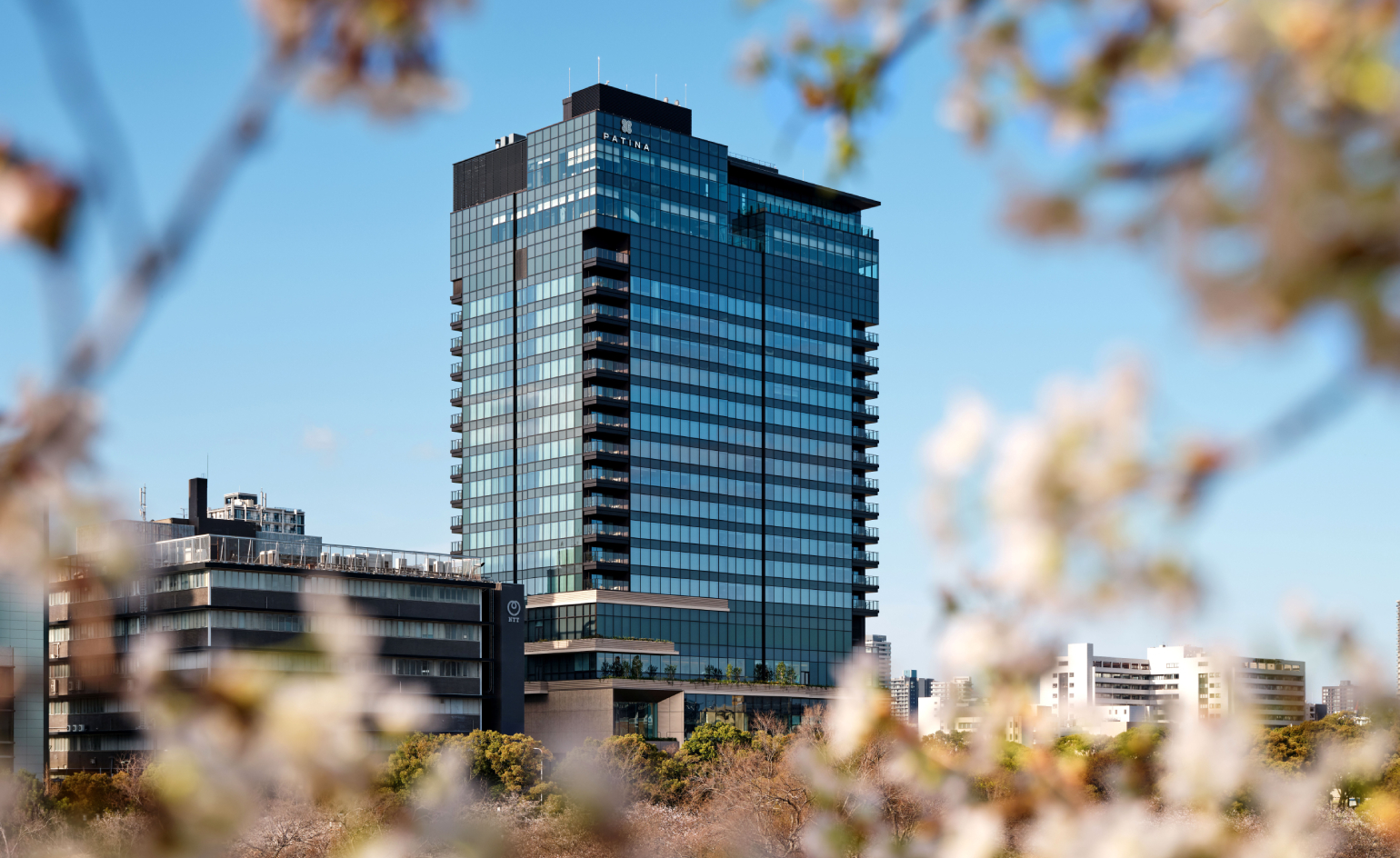 Stay at Patina Osaka for a dose of ‘transformative luxury’ in western Japan
Stay at Patina Osaka for a dose of ‘transformative luxury’ in western JapanFrom nature-inspired interiors to sound-tracked cocktails and an unusually green setting, Patina Osaka is a contemporary urban escape that sets itself apart
-
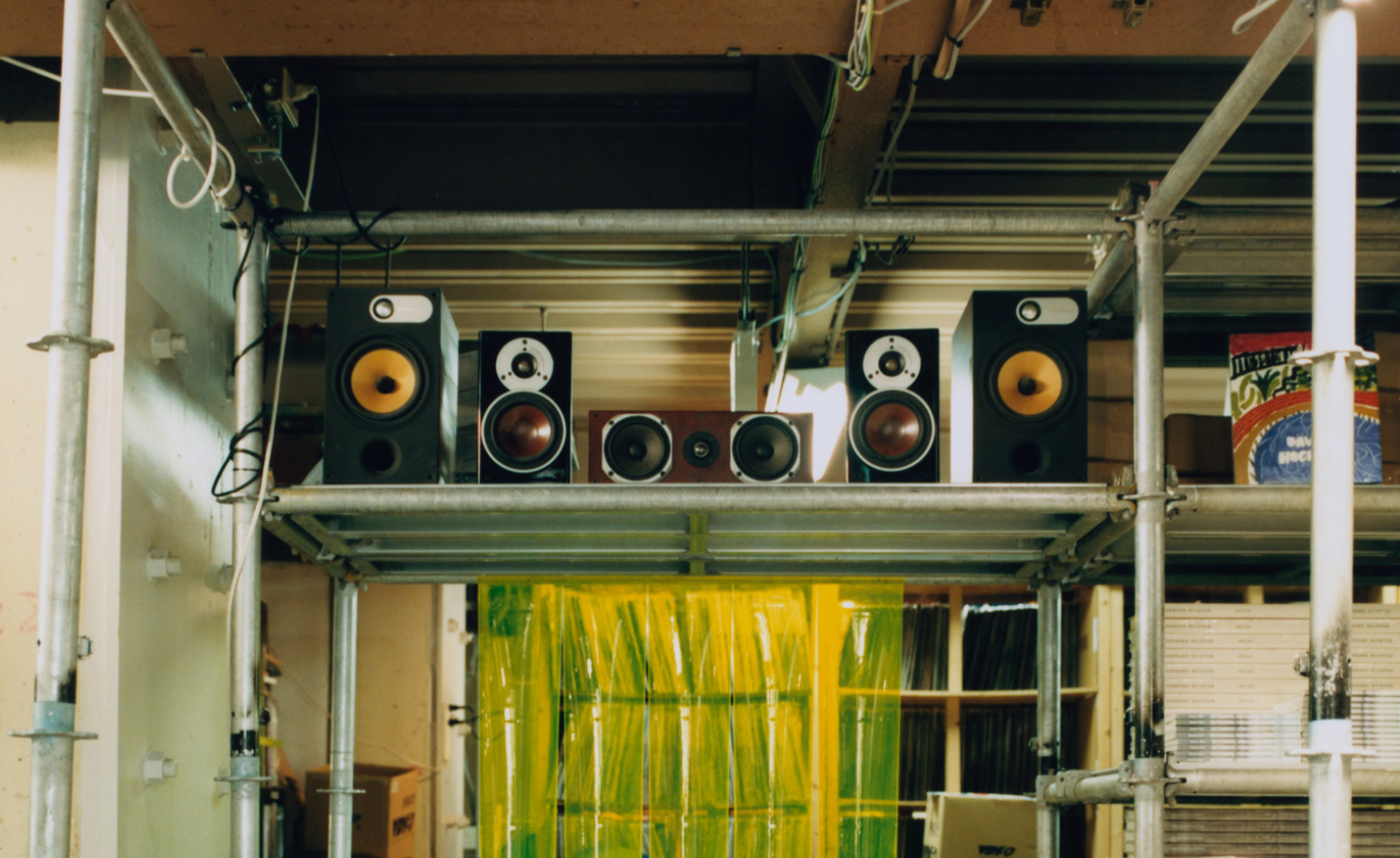 Tune into the rhythm of Tokyo’s most ambitious record shop
Tune into the rhythm of Tokyo’s most ambitious record shopVinyl Delivery Service in east Tokyo’s Skwat Kameari Art Centre is spinning a new narrative for the traditional record store model
-
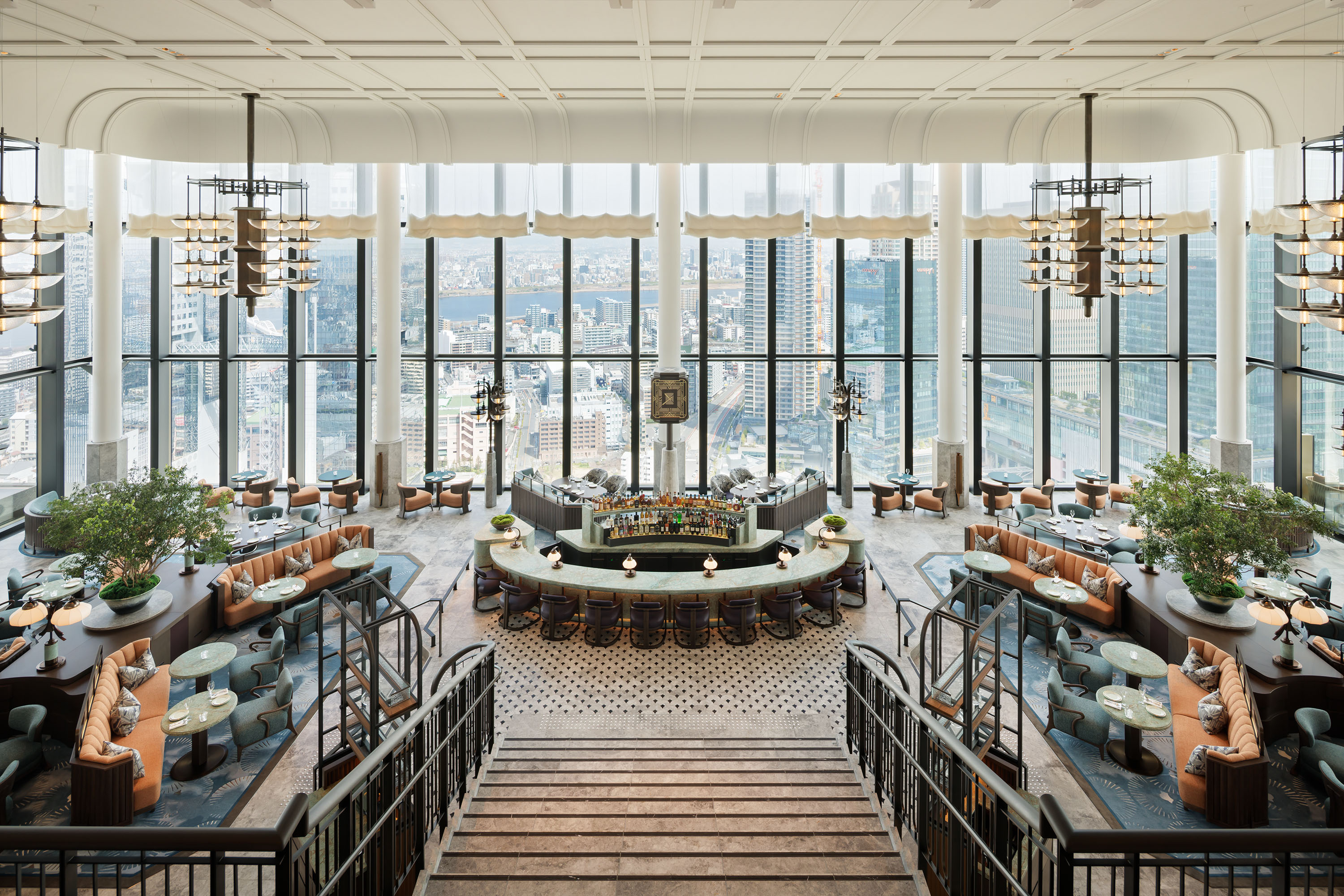 Wallpaper* checks in at Waldorf Astoria Osaka
Wallpaper* checks in at Waldorf Astoria Osaka‘It’s rare to work on a brand new hotel of this scale in Japan in today’s landscape,’ says designer Andre Fu about Osaka’s newest luxury hotel. Wallpaper* paid it an early visit
-
 Wallpaper* checks in at Rosewood Miyakojima: ‘Japan, but not as most people know it’
Wallpaper* checks in at Rosewood Miyakojima: ‘Japan, but not as most people know it’Rosewood Miyakojima offers a smooth balance of intuitive Japanese ‘omotenashi’ fused with Rosewood’s luxury edge
-
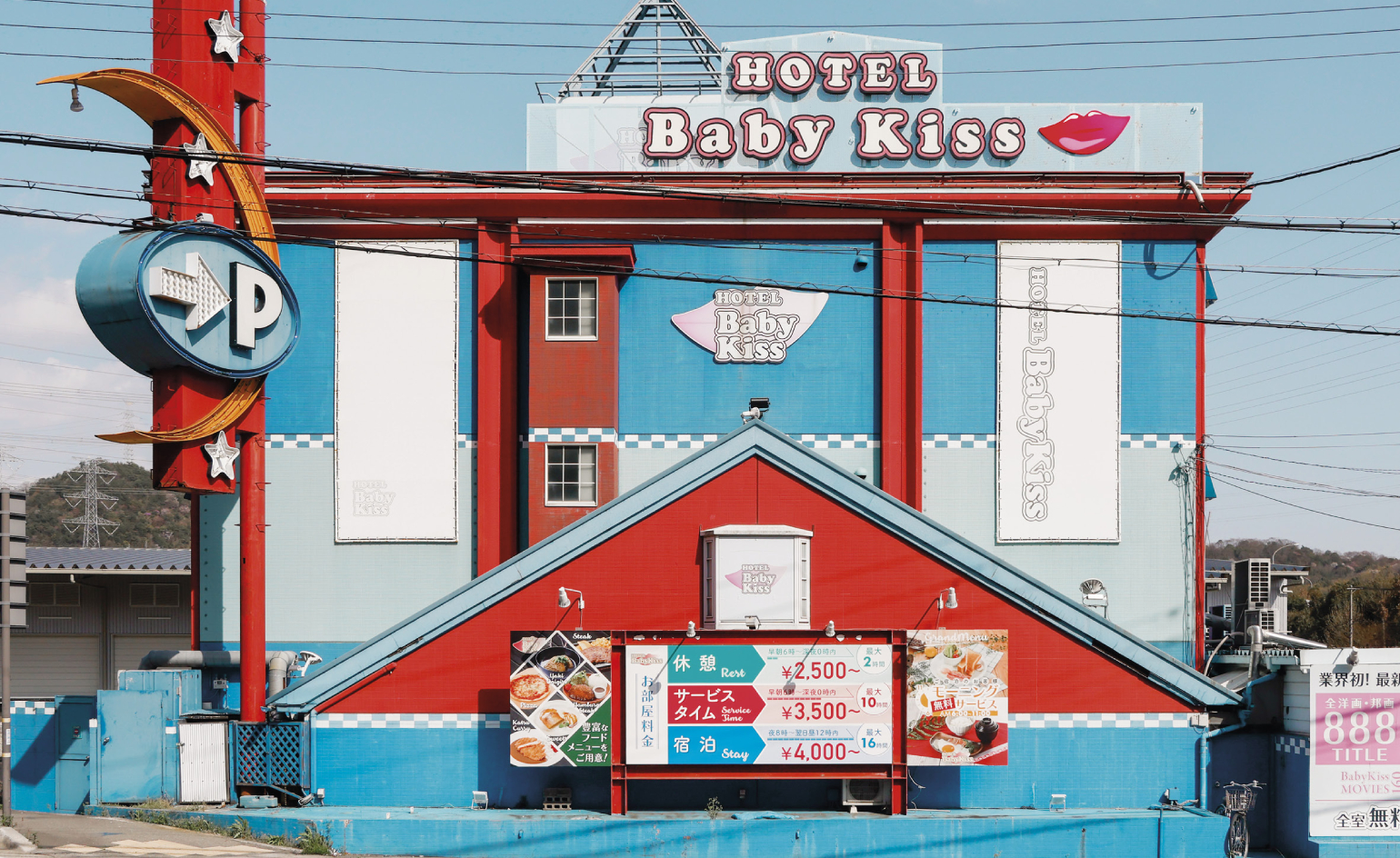 A new book captures the kitschy allure of Japanese ‘love hotels’
A new book captures the kitschy allure of Japanese ‘love hotels’For his latest project, French photographer François Prost documents the whimsical façades that characterise these erotic roadside venues.